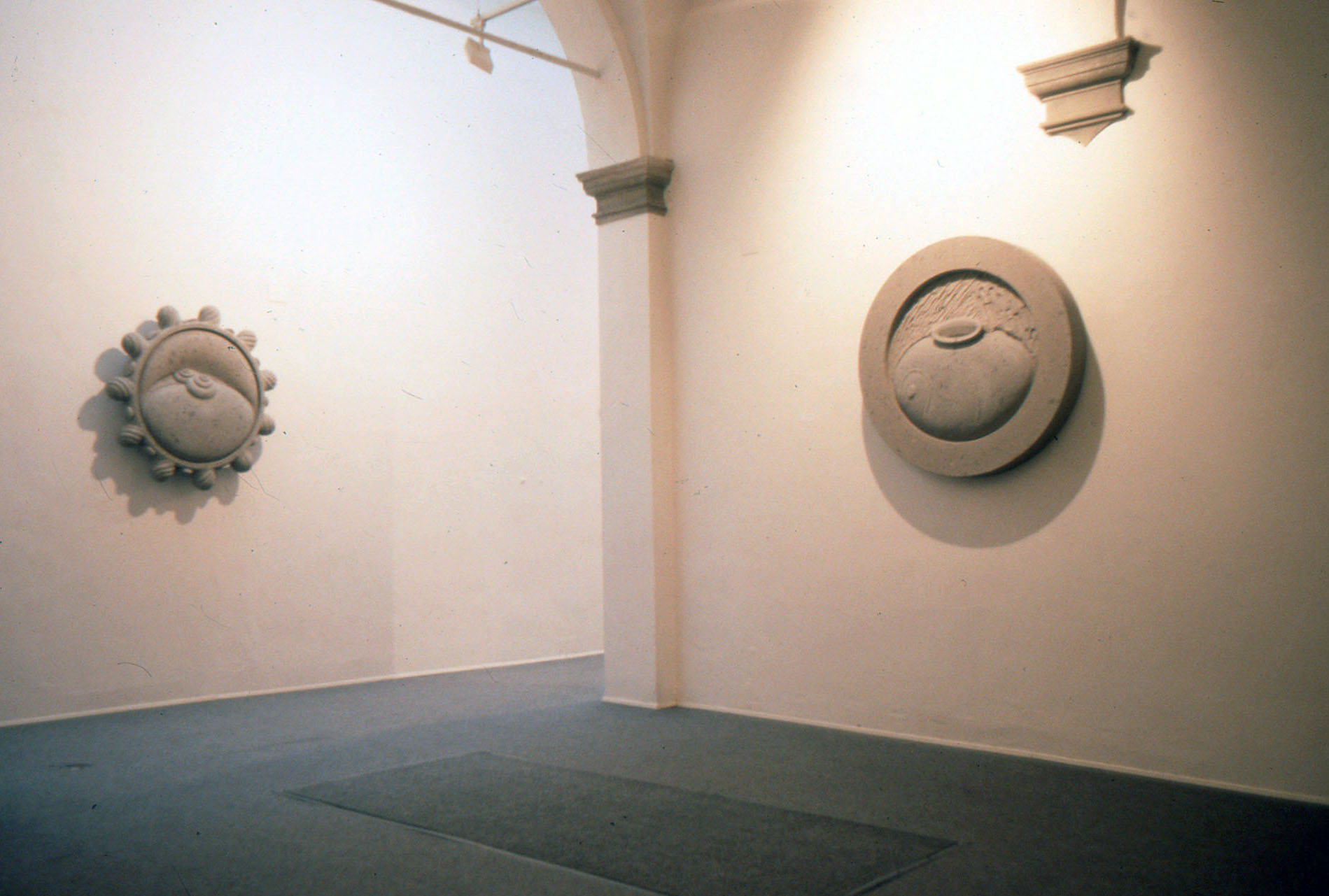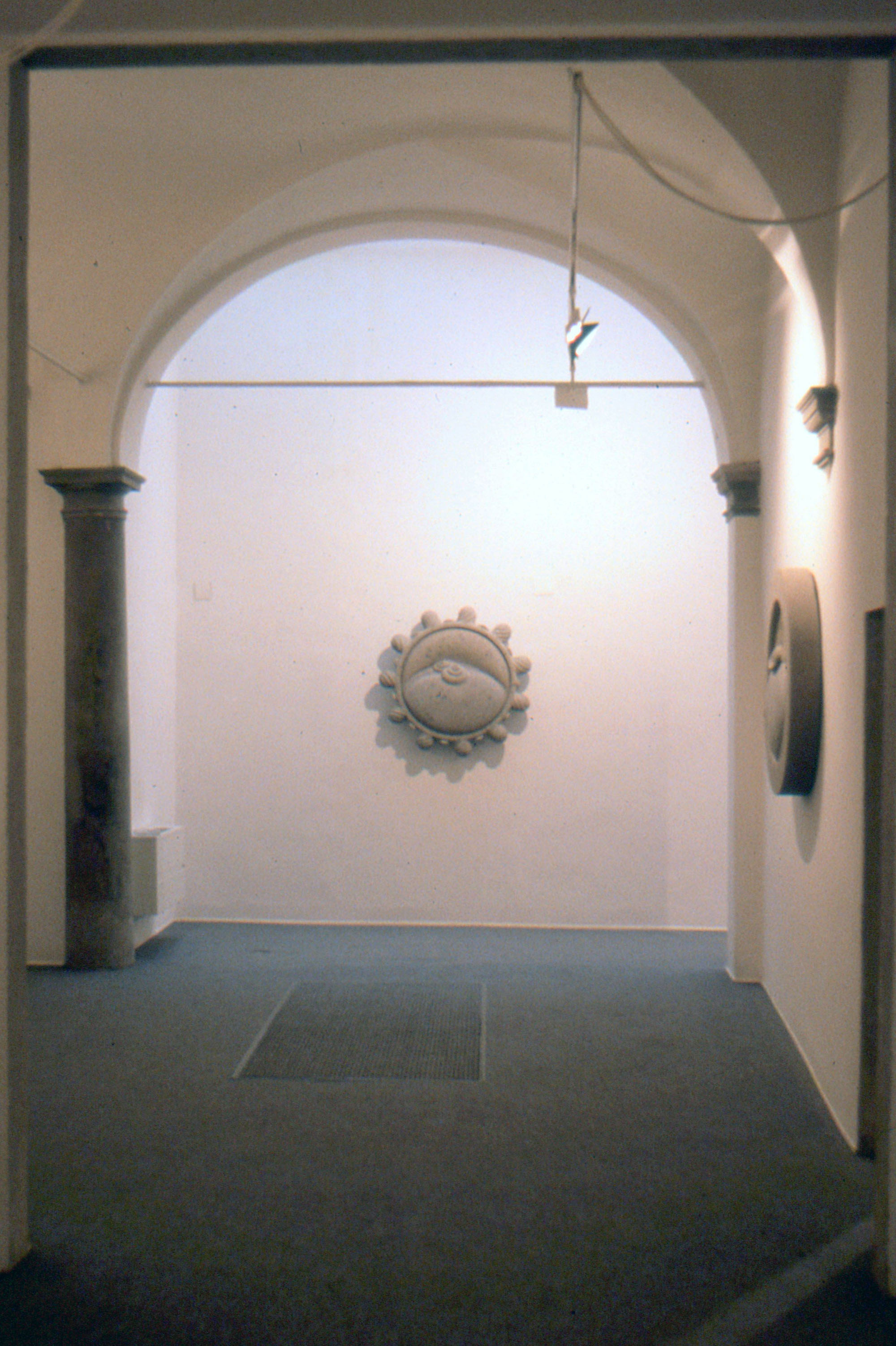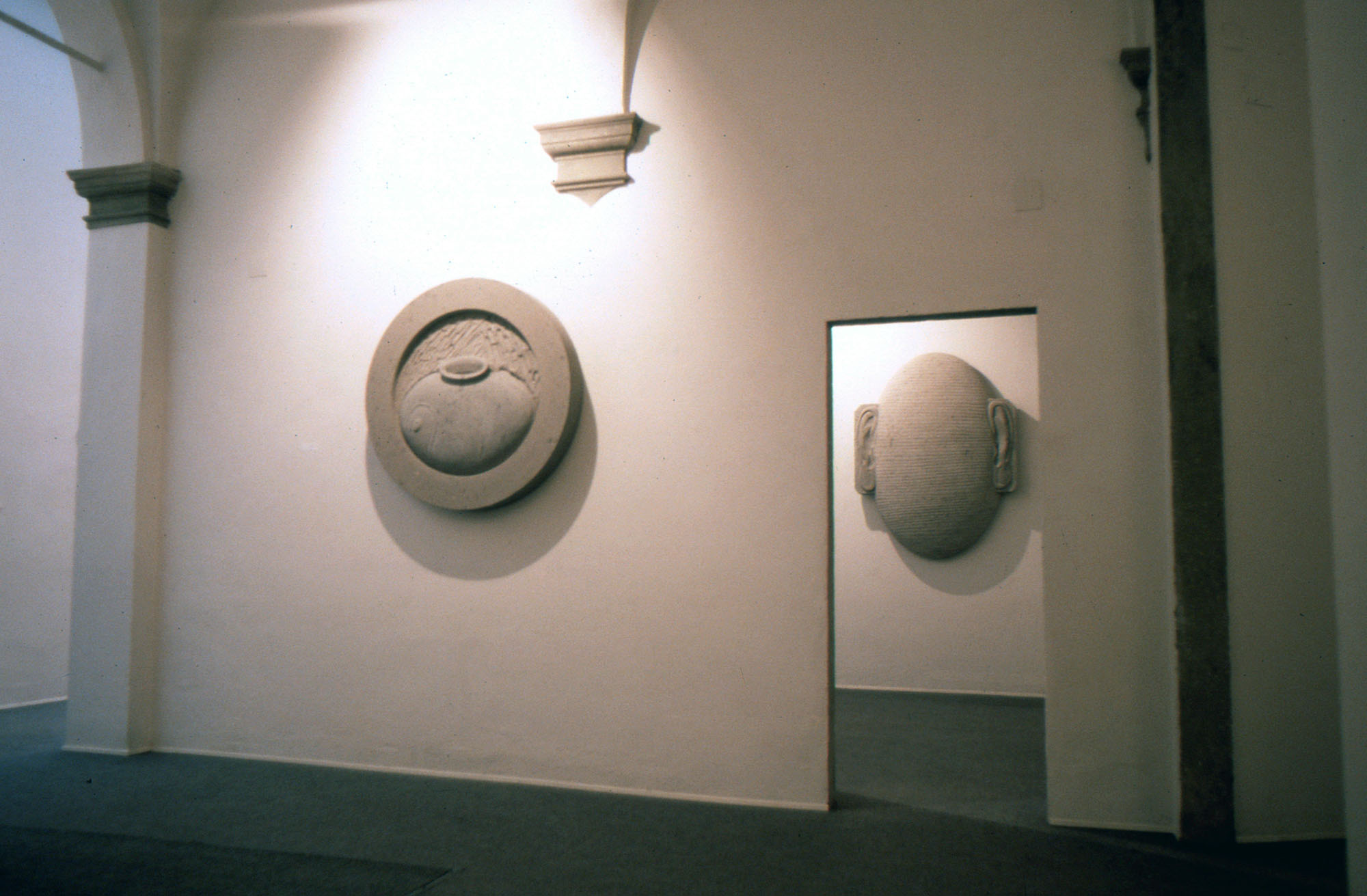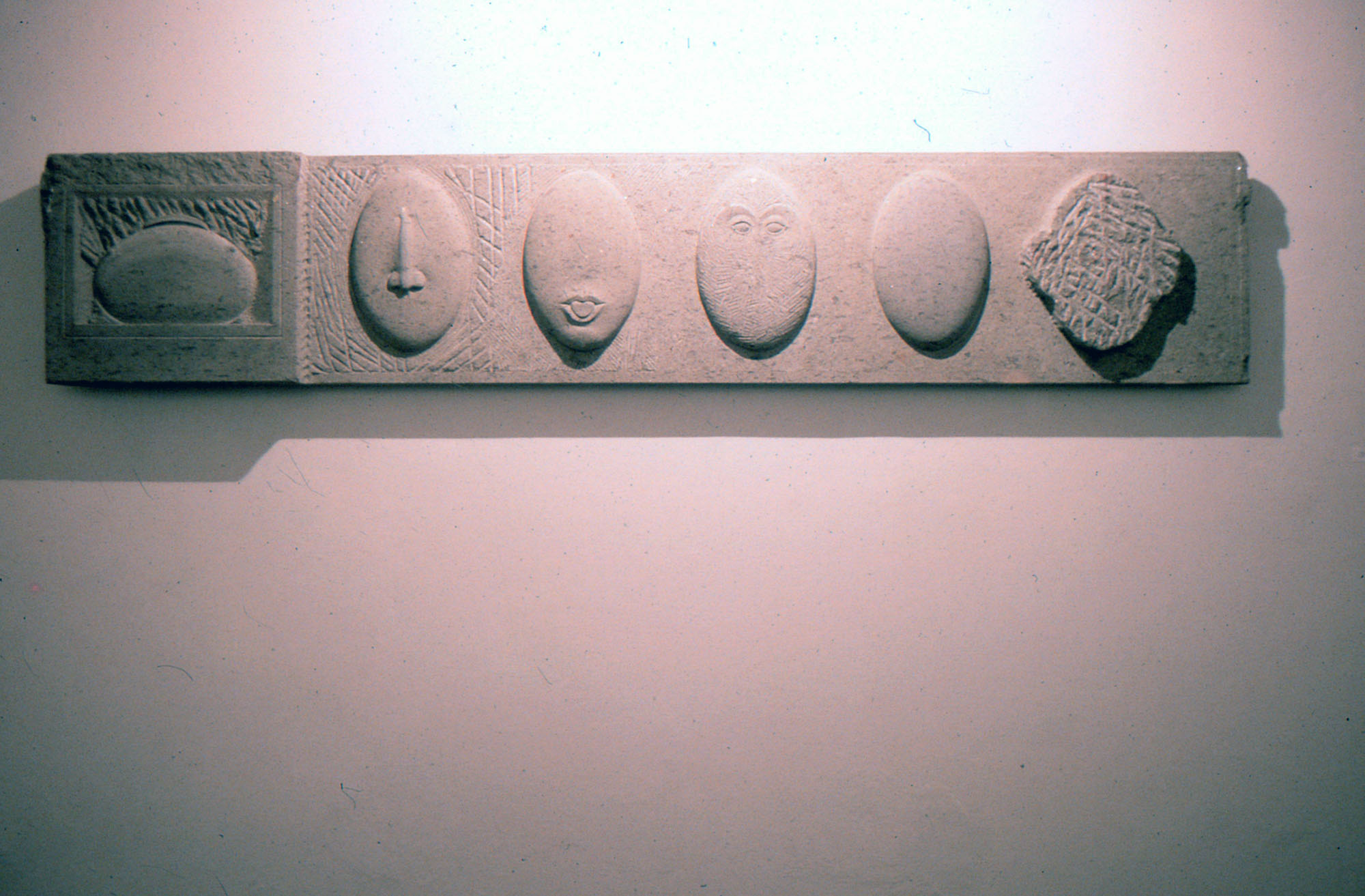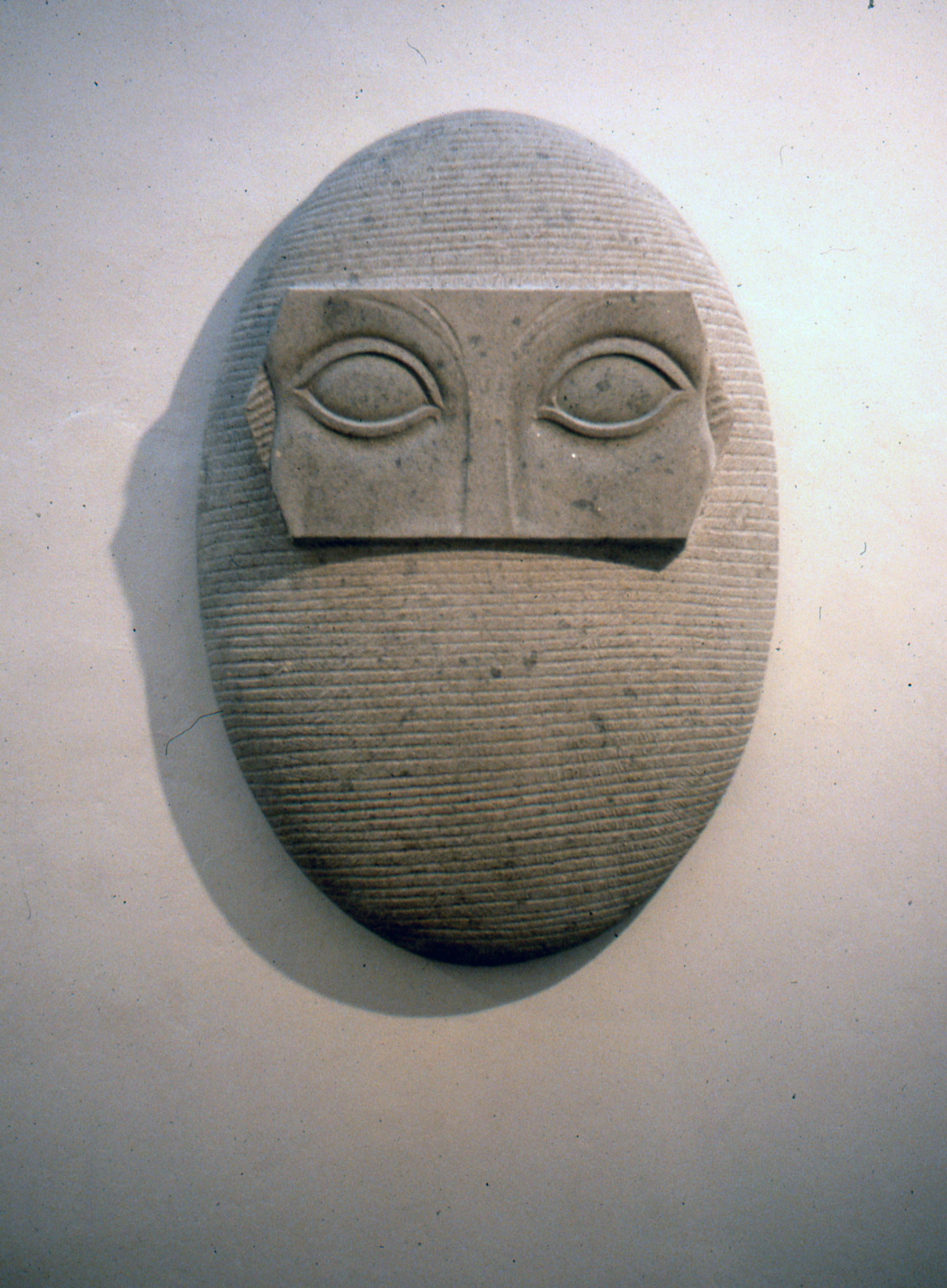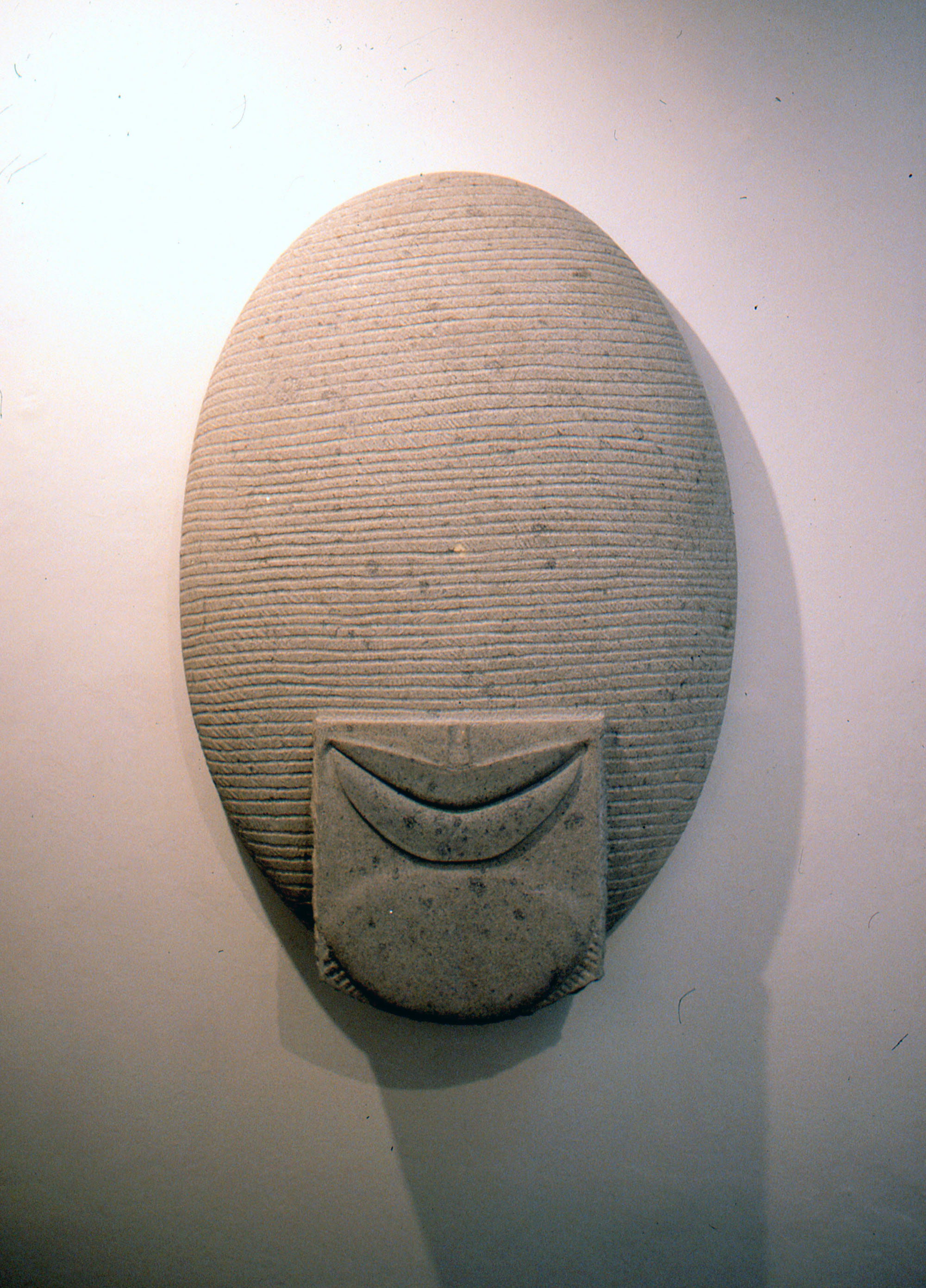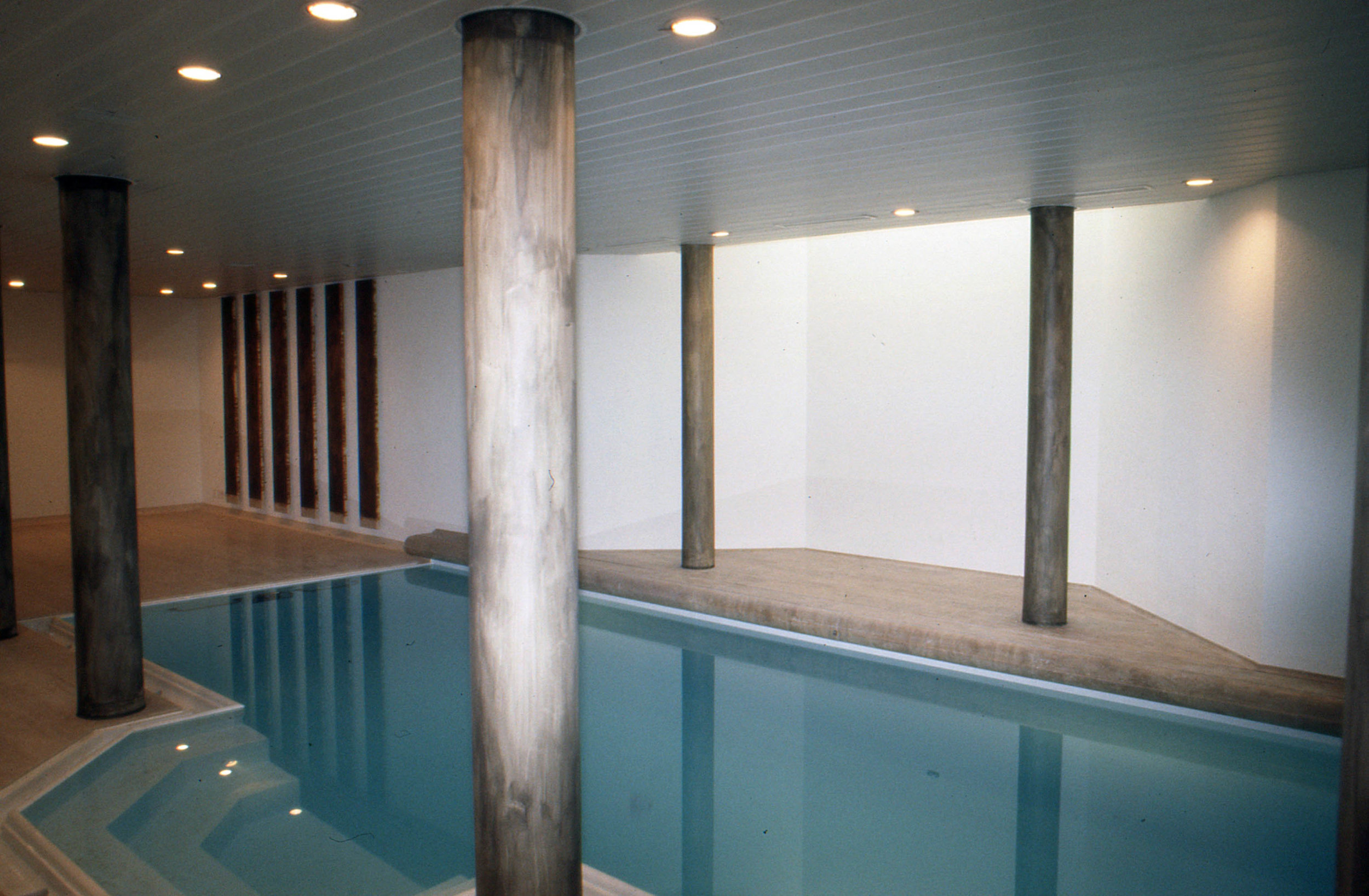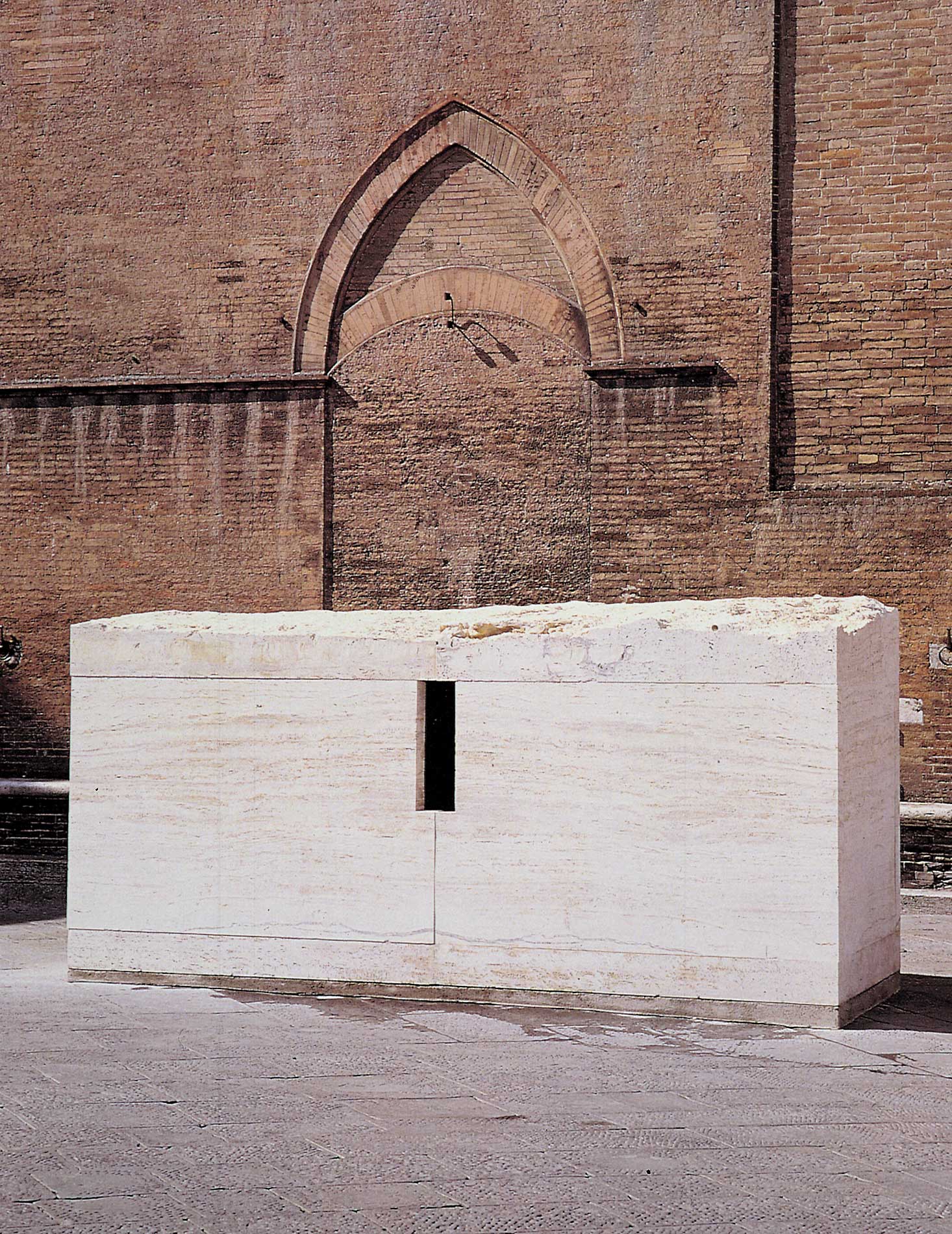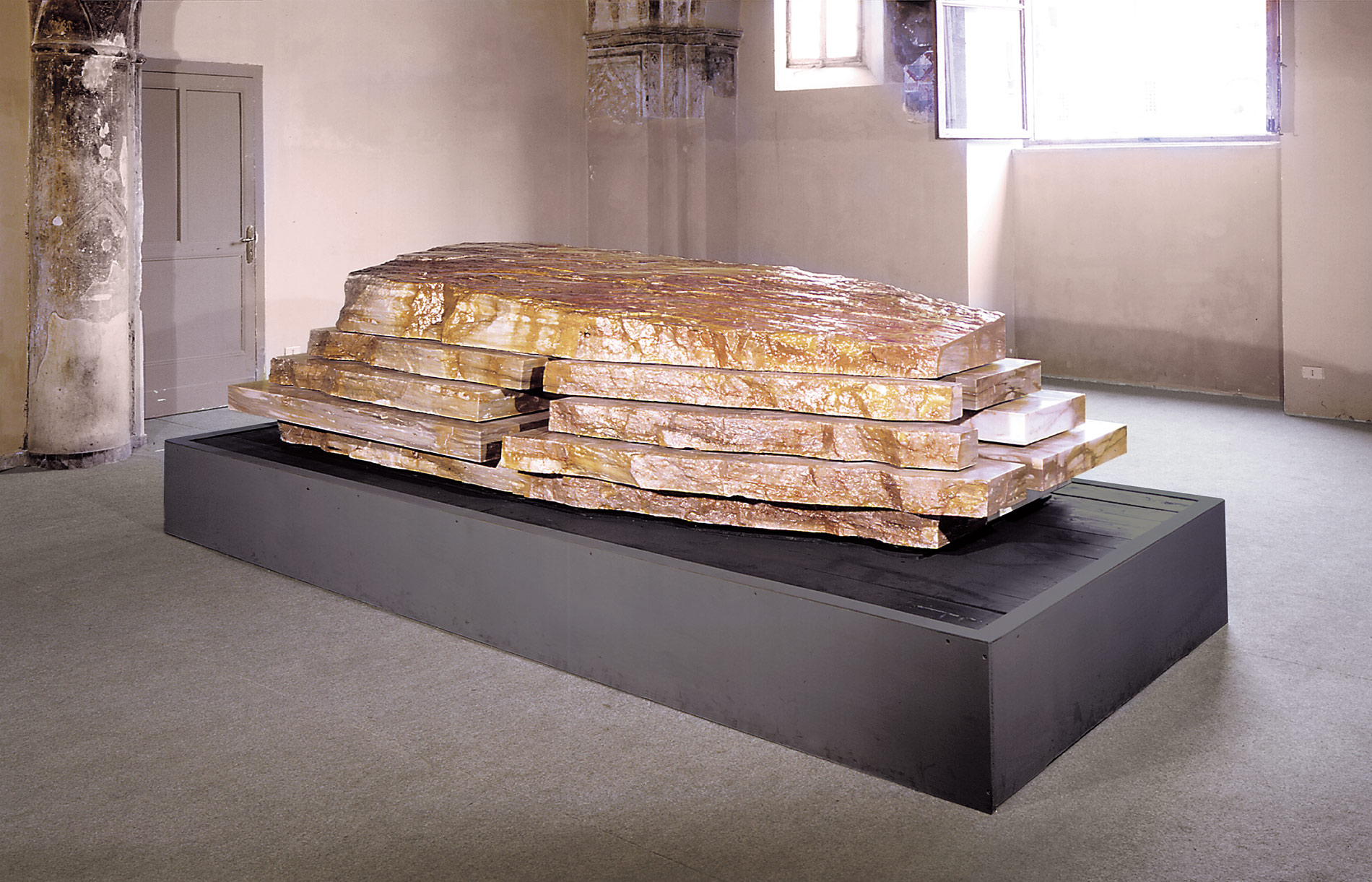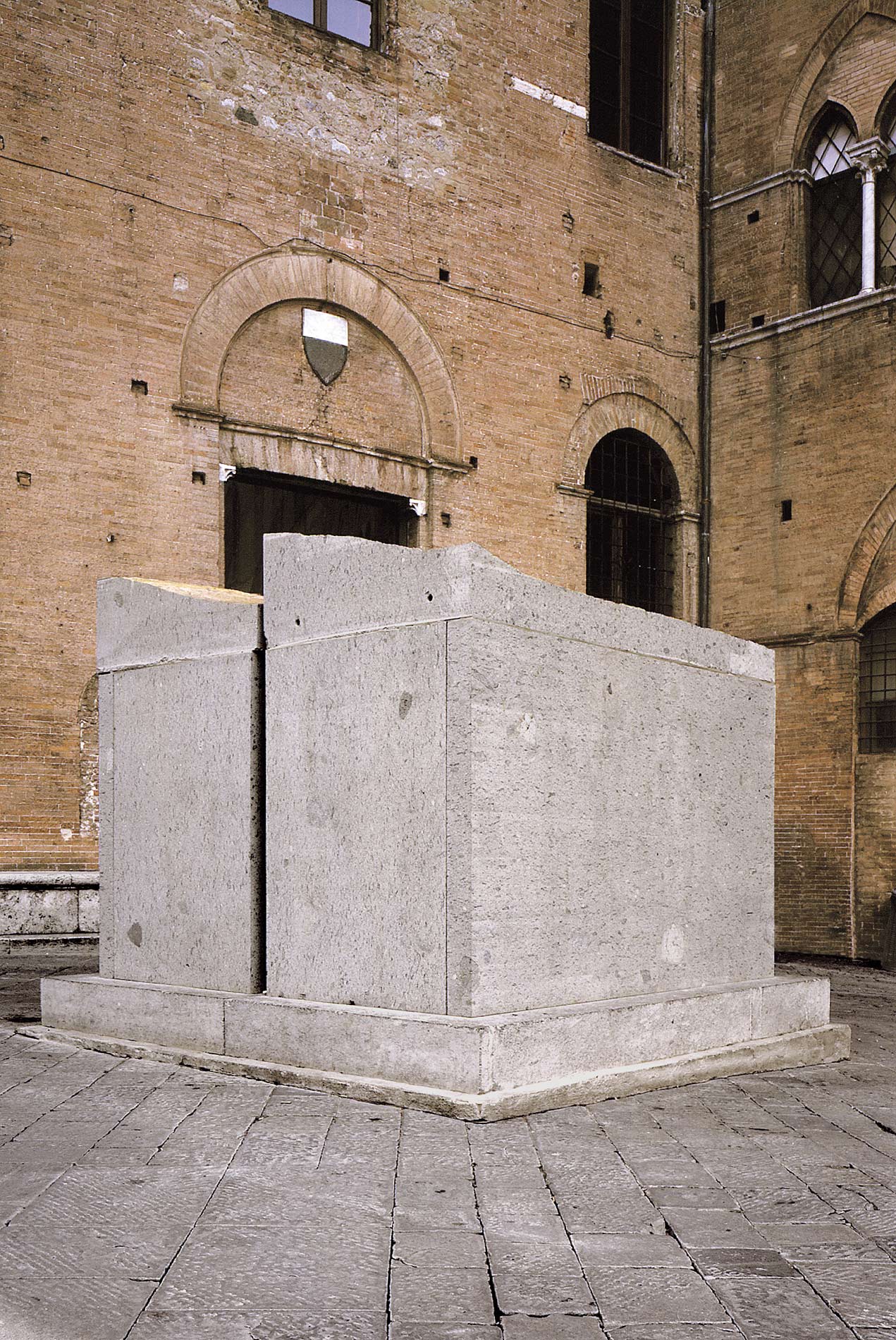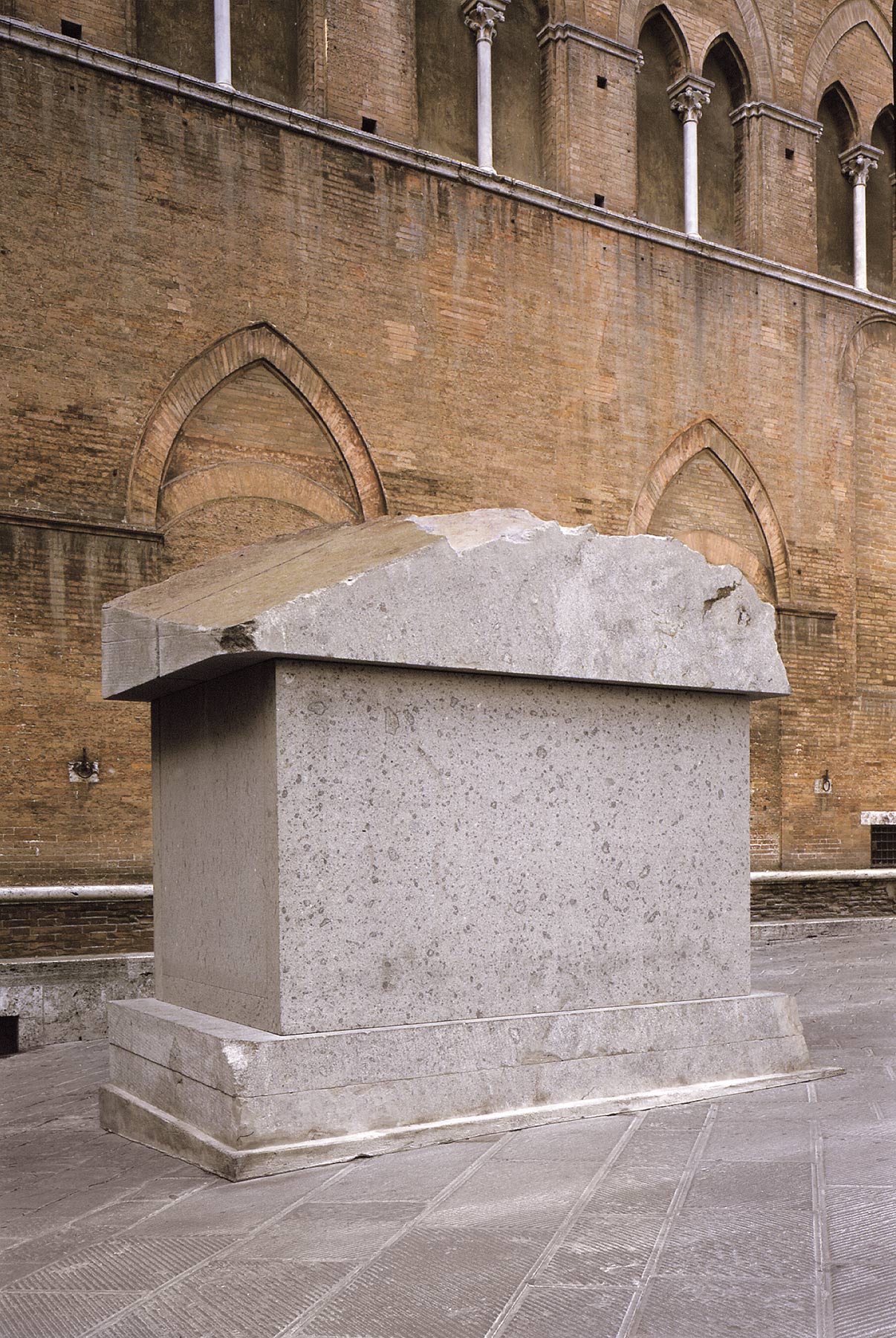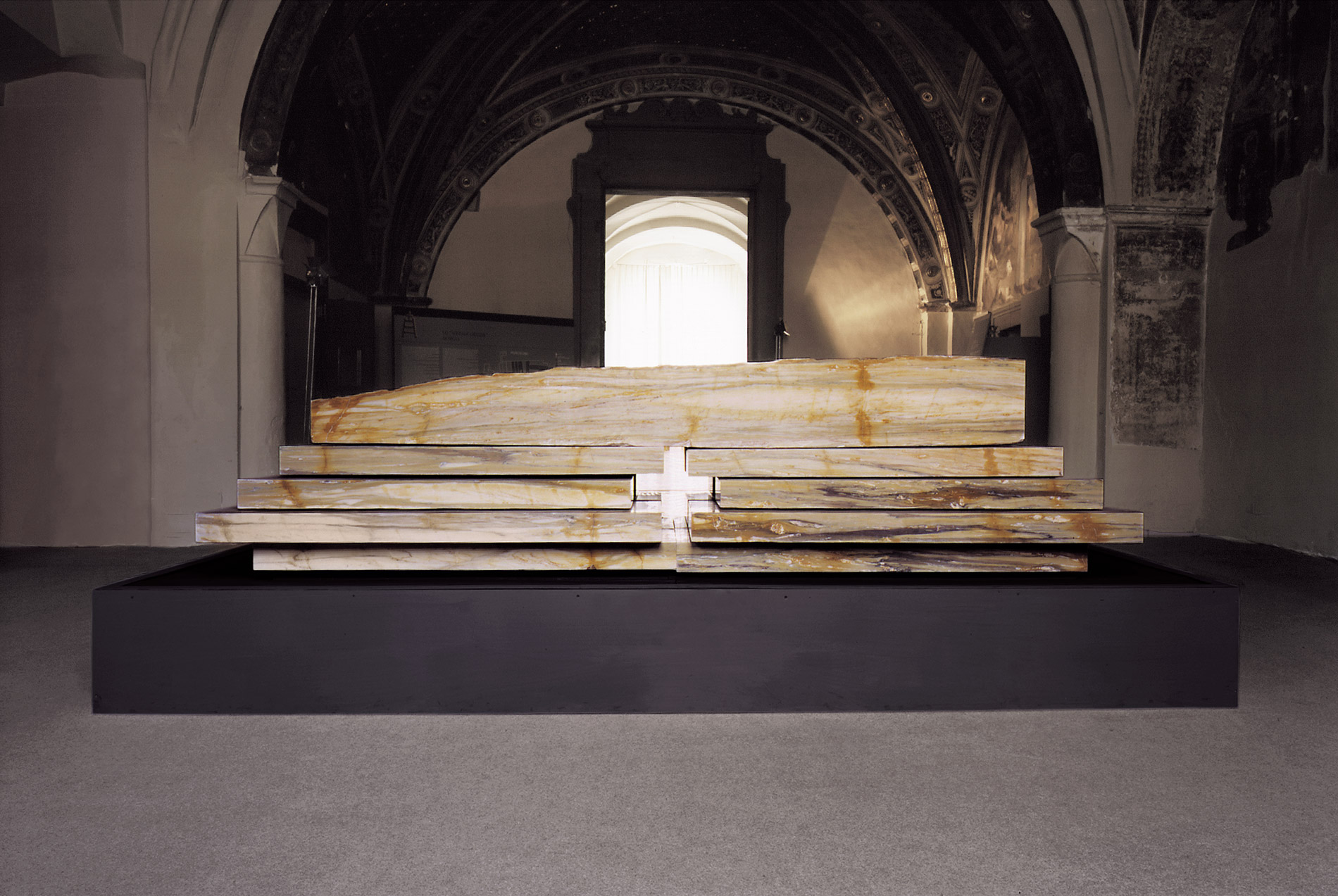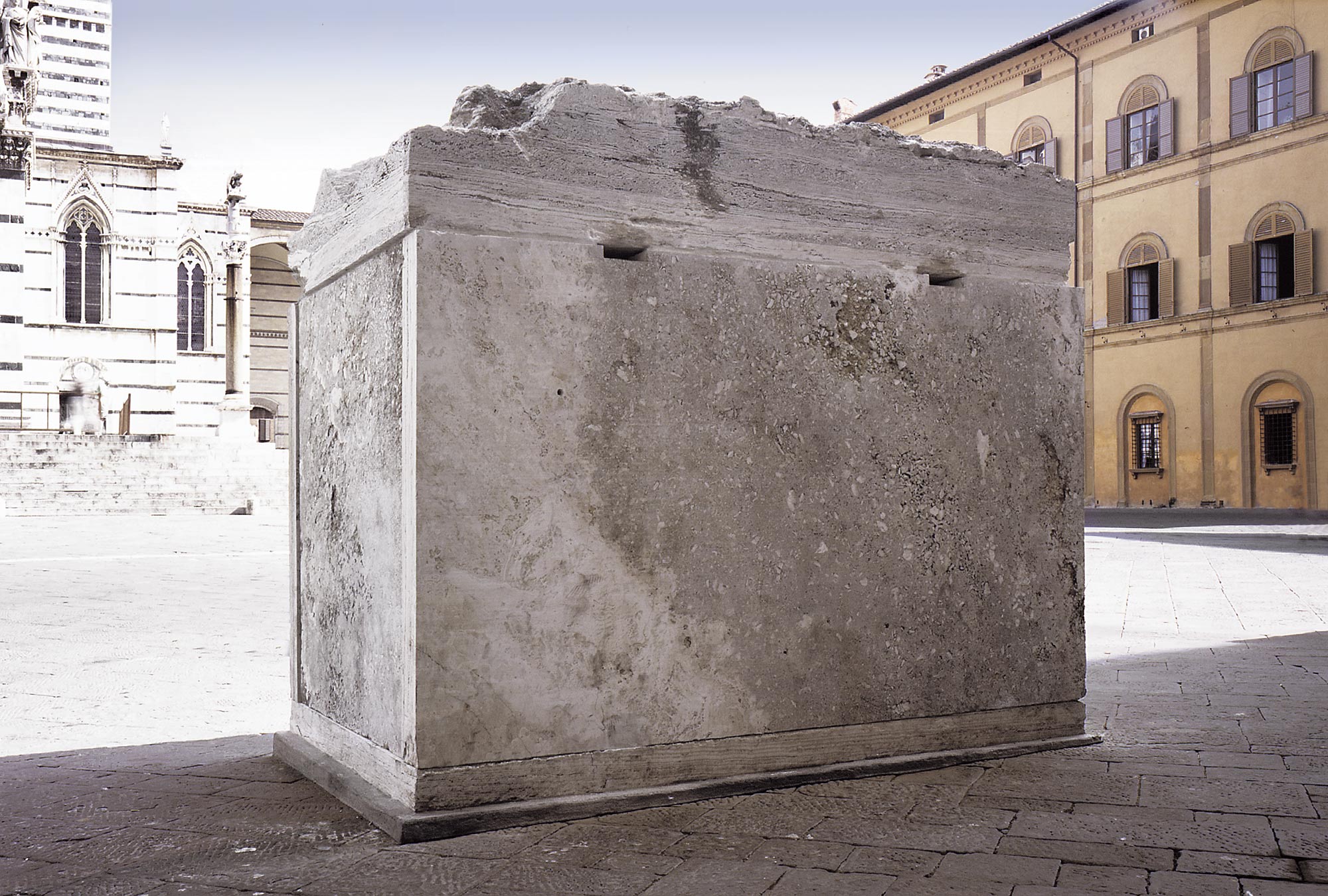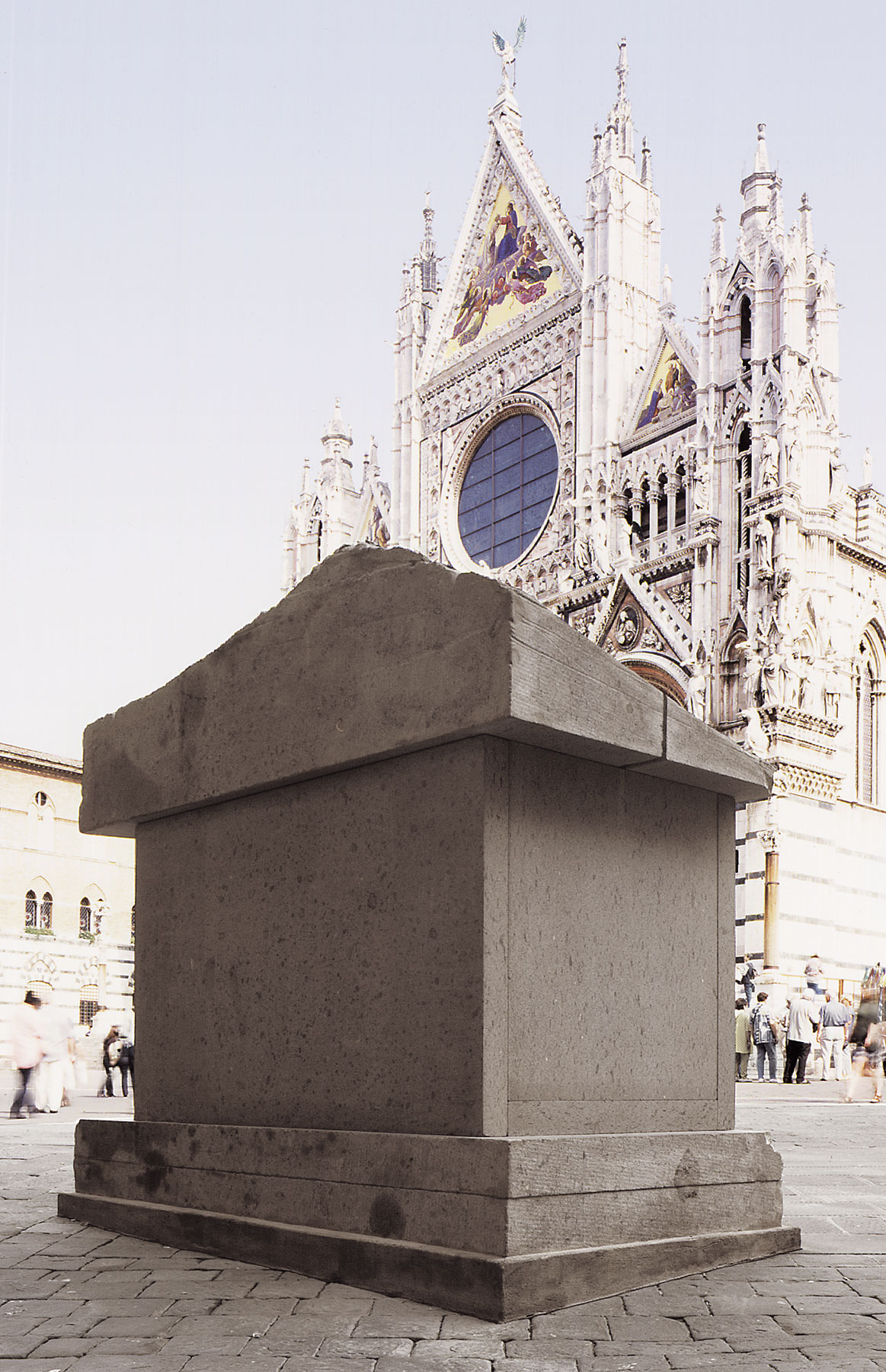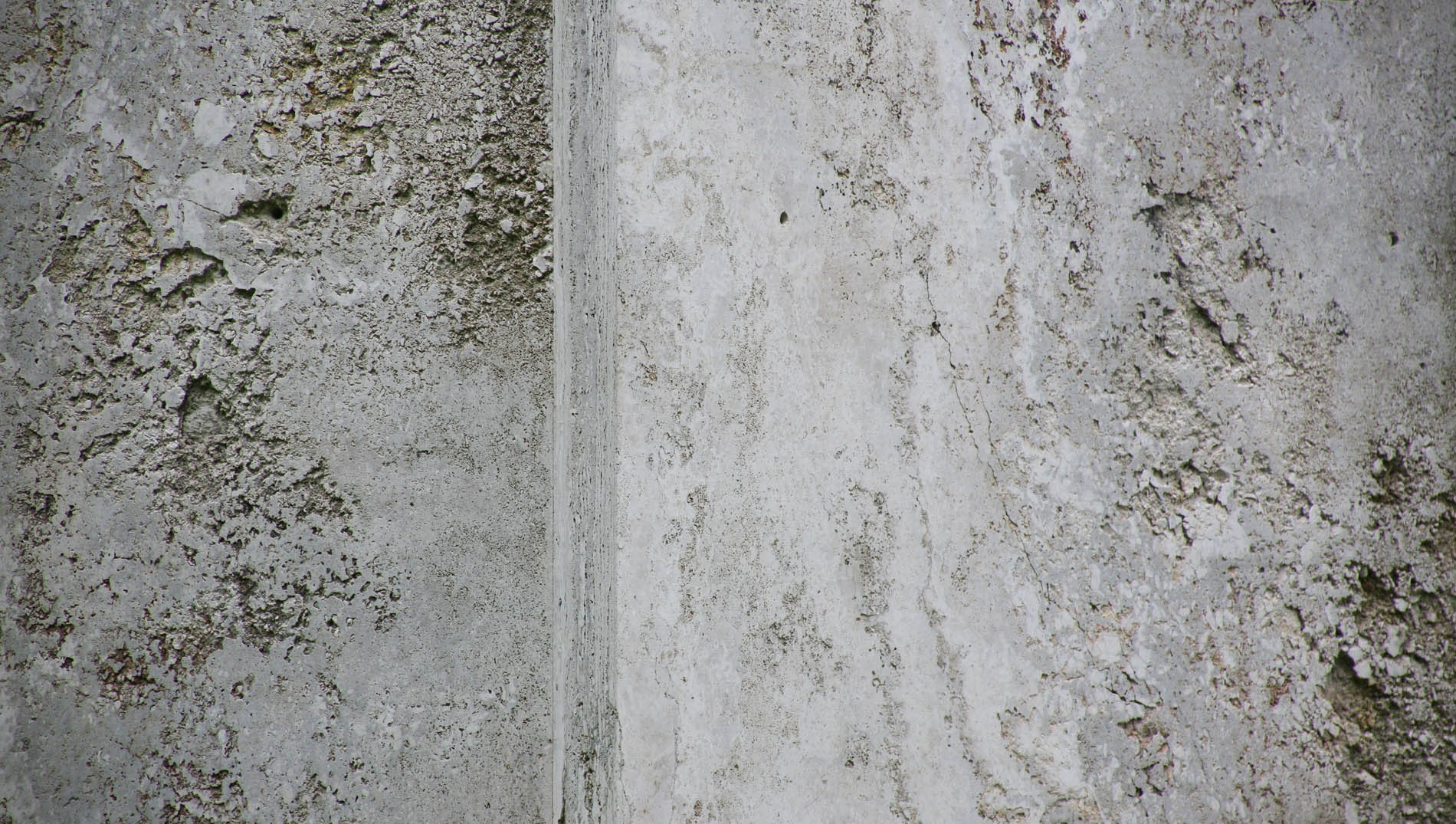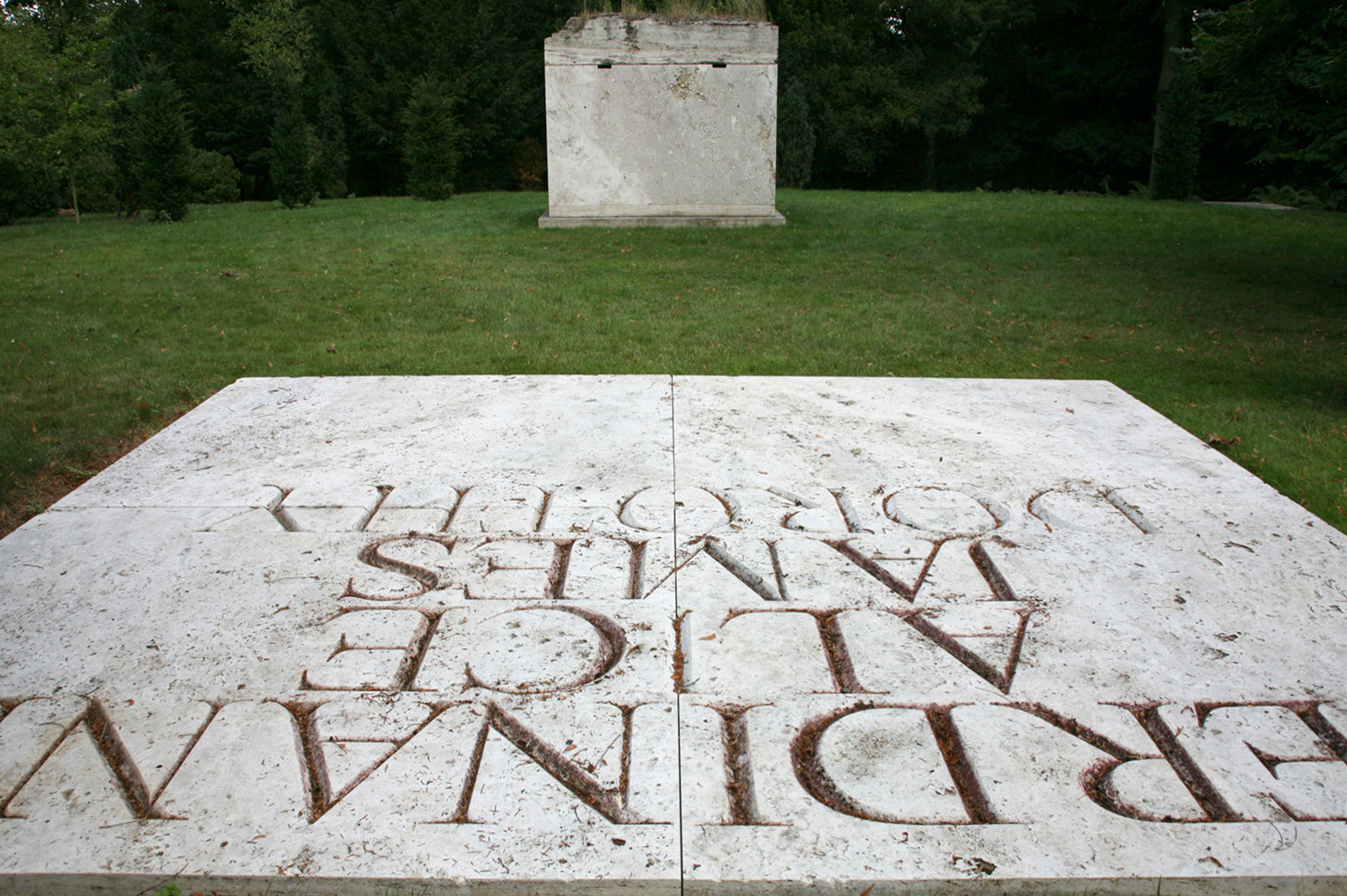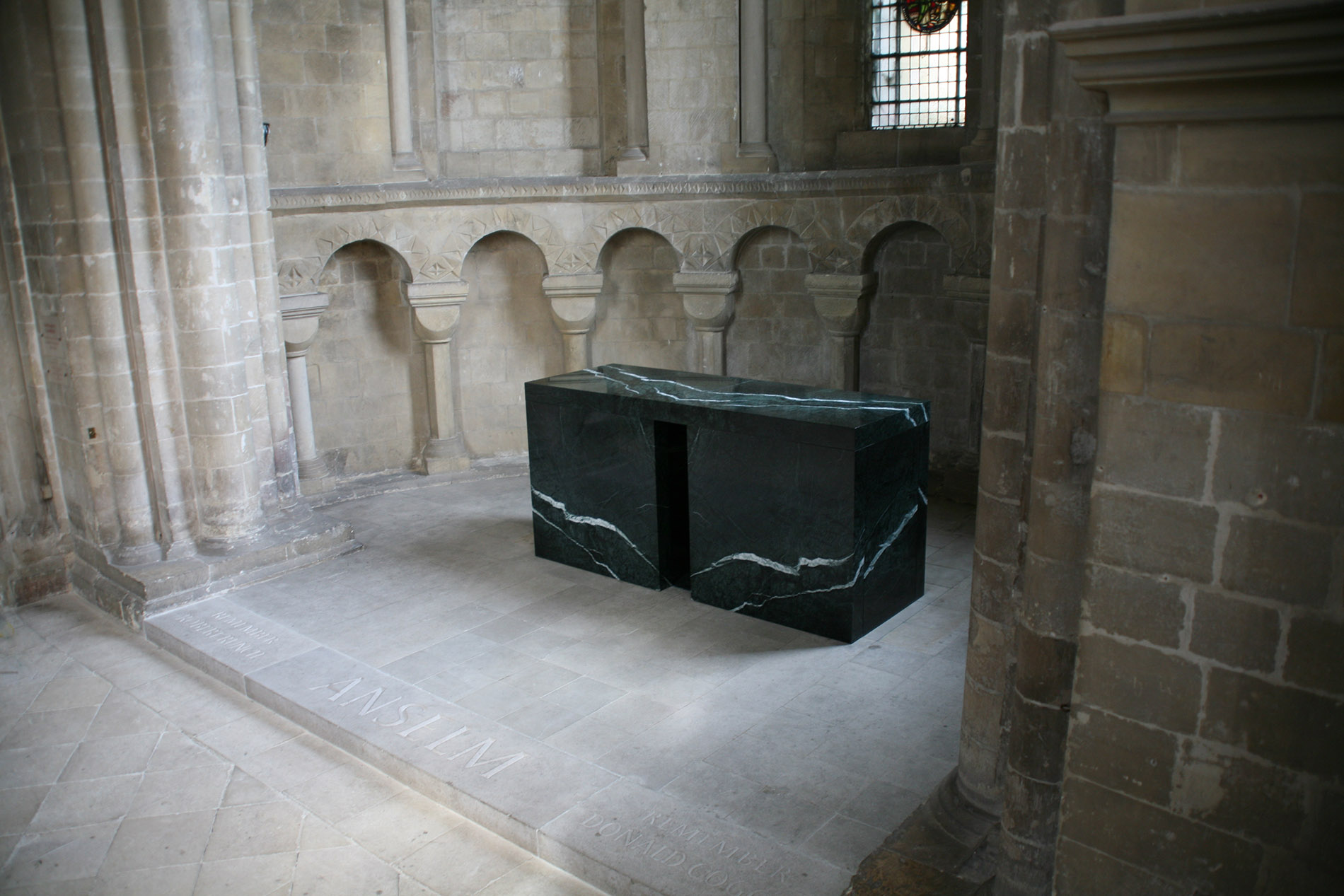Interior Space: Terra Degli Etruschi was installed in the Baron’s Walk at Waddesden Manor in 2003. The sculpture was one in a number of sculptures made in 1999 for an exhibition entitled Interior Space in the Piazza del Duomo and Ospedale Santa Maria della Scala in Siena. The theme of the exhibition was to work with stone from throughout the area of the Etruscan civilization. It was seen as an ‘omage’ to their conception of the afterlife and preoccupation with necropolis and their furnishing. Stones included white Carrara marble, volcanic peperino and the Sienese travertine of which this sculpture is made from the quarries of Dei. Hence the title which translates as ‘The Earth of Gods’
This stone has been formed in historical rather than geological time as scattered upon its capping stone are fragment of terra cotta from Etruscan pots that have become embedded in the developing stone itself. Perhaps even the flora growing from it are too from seeds of ancient days.
Subsequent commissions for the Inscribed Pavement and the Altar were made with Massive slabs and blocks from the Quarries of Dei.
By way of the provenance, the sculpture was exhibited in the the ancient alpine Roman city of Aosta with the other Interior Space pieces from the Siena exhibition, in sites around the city and at the main Museum in the town. The exhibition was curated by Luigi di Corato and represented as the work of a Grand Tour entitled Fasti (a Roman calendar or register of events) was paired with an exhibition of J.M.W.Turner’s paintings of the ValD’Aosta at the Museum.

